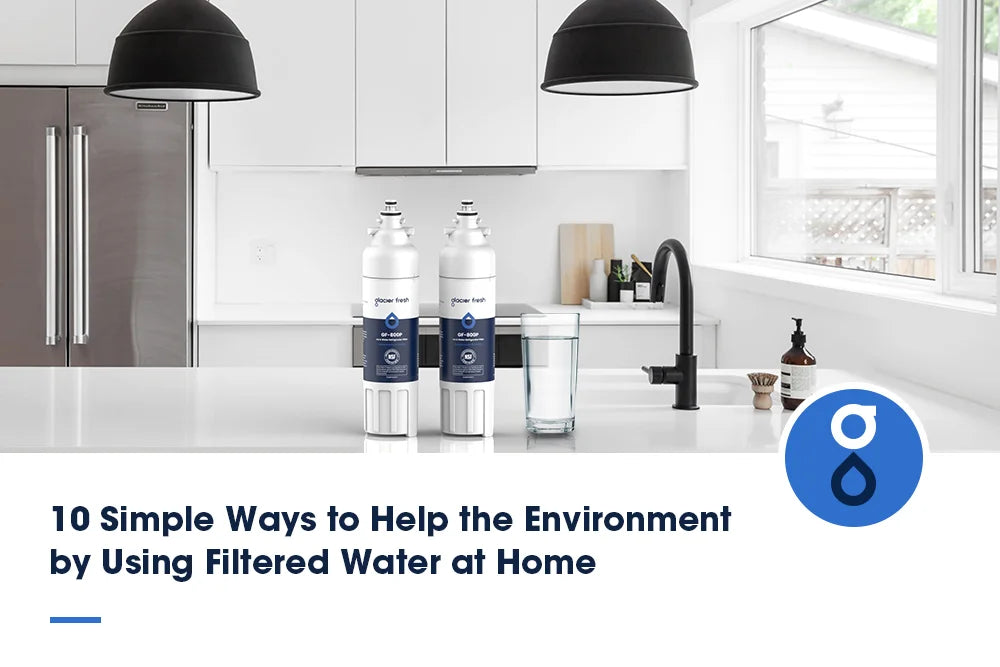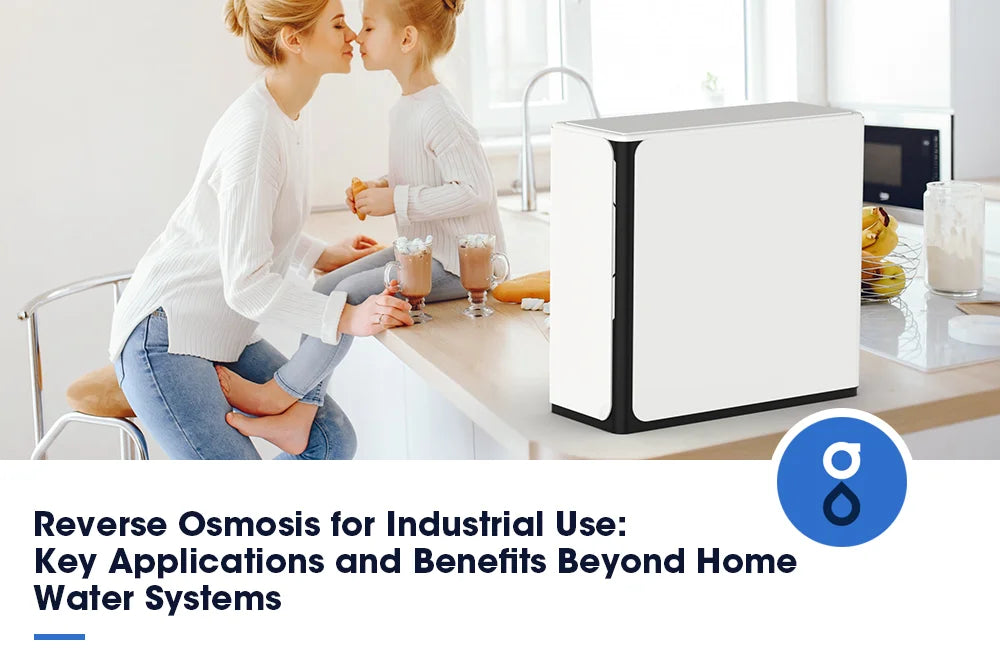Table of Contents:
Understanding well water quality
How reverse osmosis works?
Is reverse osmosis safe for well water?
Factors to consider before installing an RO system for well water
Alternatives to reverse osmosis for well water
FAQs
Conclusion
When your home relies on well water , ensuring the safety of your drinking water is a top priority. Well water can be valuable, but it's often more vulnerable to contamination than municipal water supplies. Many homeowners turn to filtration systems like reverse osmosis (RO) to safeguard their water. But is a reverse osmosis system the best choice for treating well water? This blog will explore whether using RO for well water is safe and what you must consider before switching.
Understanding well water quality

Well water comes from underground sources naturally filtered by soil, rocks, and sand. However, these natural filters aren’t foolproof. Several contaminants can find their way into your water supply. Common pollutants in well water include:
- Bacteria and viruses: Harmful microorganisms from nearby septic systems or animal waste can seep into the water.
- Heavy metals: Arsenic, lead, and mercury are often found in groundwater, depending on the geology of the region.
- Nitrates and pesticides: Agricultural runoff, including fertilizers and pesticides, can pose a significant risk to water quality.
- Sediment: Dirt, sand, and other particles can cloud the water.
Regular water testing is essential to detect these contaminants and assess whether your well water is safe for drinking. Without proper treatment, consuming contaminated water can lead to serious health issues, particularly for those with weakened immune systems, children, and the elderly.
How reverse osmosis works?
Reverse osmosis (RO) is a widely used water filtration process that pushes water through a semi-permeable membrane. This membrane traps impurities, allowing only clean water molecules to pass through. A reverse osmosis system typically consists of several stages:
- Pre-filtration: Removes larger particles like sediment and chlorine.
- Membrane filtration: The system's heart, where dissolved contaminants are filtered out.
- Post-filtration: Final polishing of water before it reaches your tap.
Reverse osmosis systems are highly effective at removing many contaminants, including heavy metals (like lead and arsenic), nitrates, pesticides, and certain chemicals like fluoride. However, the system’s ability to remove bacteria and viruses is limited, making it unsuitable as a standalone solution for heavily contaminated well water without pre-treatment.
Is reverse osmosis safe for well water?
Yes, reverse osmosis is generally safe and effective for well water, but there are some caveats to consider. RO systems are particularly useful for removing harmful contaminants like heavy metals, nitrates, and pesticides, which are common in well water. However, they may not be sufficient if your water contains bacteria, viruses, or other microorganisms that RO systems cannot effectively filter out independently.
For well water that tests positive for biological contaminants, a pre-treatment system such as ultraviolet (UV) light or chlorination must be used to disinfect the water before it reaches the RO system. This combination ensures that your water is free from chemical pollutants and is microbiologically safe to drink.
Factors to consider before installing an RO system for well water

Before you decide on Glacier Fresh reverse osmosis system for your well water, there are a few important factors to keep in mind:
- Water testing: Start with a comprehensive water test to identify which contaminants are present. This will help you determine whether an RO system alone is sufficient or if additional filtration methods are needed.
- Pre-treatment: To eliminate these microorganisms, if your well water contains bacteria or viruses, consider adding pre-filtration or disinfection technologies like UV lights or chlorination.
- Maintenance: RO systems require regular maintenance, including changing filters and checking the membrane to ensure optimal performance. Maintaining maintenance can result in good filtration and safe water.
- System capacity: RO systems can produce water slowly, so consider whether the system can meet your household’s water demands. If you use a lot of water, you may need a system with a larger tank or a faster recovery rate.
Alternatives to reverse osmosis for well water
While reverse osmosis is an effective option, it’s not the only choice. Other filtration systems might be more suitable depending on your specific water quality needs:
- Activated carbon filters: These filters can remove some organic compounds, chlorine, and pesticides but are less effective against heavy metals and nitrates.
- UV filtration: Ideal for disinfecting water by killing bacteria and viruses. However, it does not remove chemicals or dissolved solids.
- Whole-house filtration: These systems treat all the water entering your home and are beneficial if your water is contaminated with a wide range of pollutants. They can be paired with RO systems for comprehensive filtration.
Each filtration method has pros and cons, so you should choose based on the contaminants in your well water.
FAQs
Is reverse osmosis effective at removing bacteria from well water?
No, reverse osmosis alone cannot remove bacteria and viruses. To ensure microbiologically safe water, you’ll need a pre-treatment system, like UV disinfection.
How often should I test my well water using a reverse osmosis system?
It’s recommended to test your well water at least once a year, even if you’re using an RO system, to monitor for any changes in water quality.
Do I need a pre-filter for well water with an RO system?
Yes, in most cases, pre-filters are necessary to remove sediment and other large particles before water enters the RO system, helping to extend the system's life.
Conclusion
Reverse osmosis systems are robust for filtering well water, especially when removing heavy metals, nitrates, and chemicals. However, they aren’t a one-size-fits-all solution. Before installing an RO system, it's essential to test your well water and consider whether additional filtration, such as UV or pre-treatment filters, is necessary. With the right setup, an RO system can provide safe, clean drinking water from your well for years. Visit Glacier Fresh to find more water filtration solutions.
















